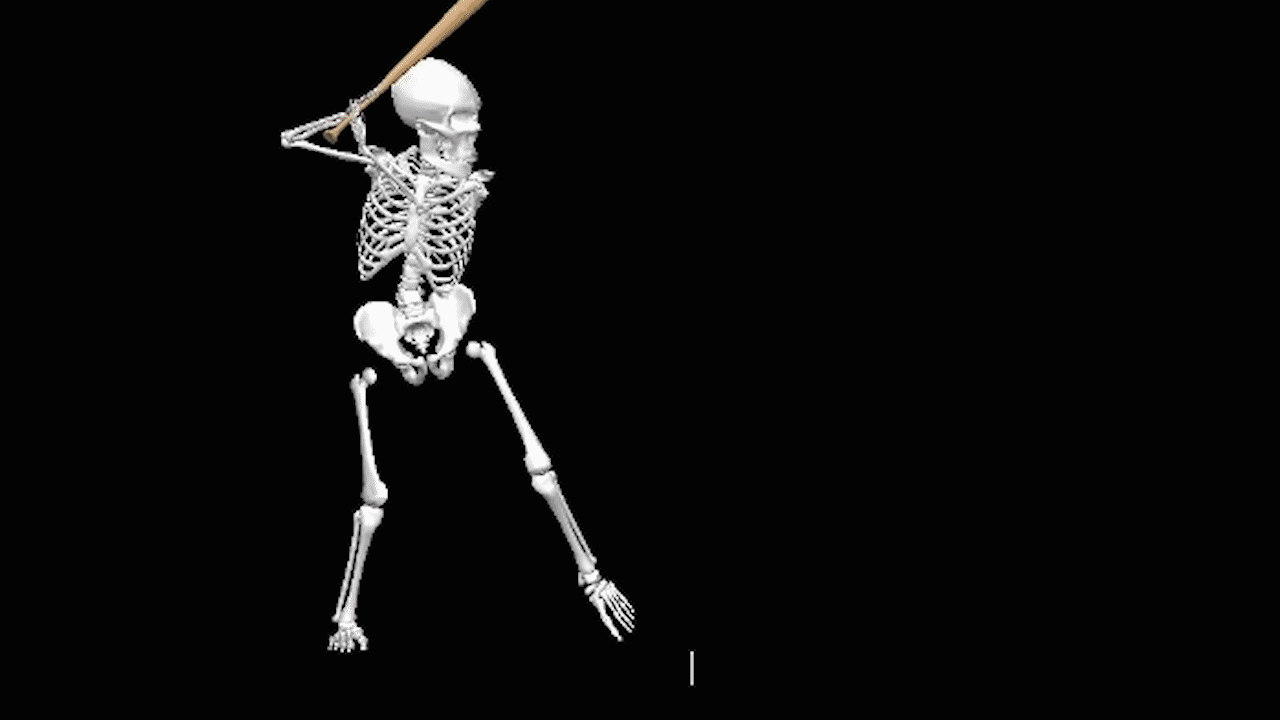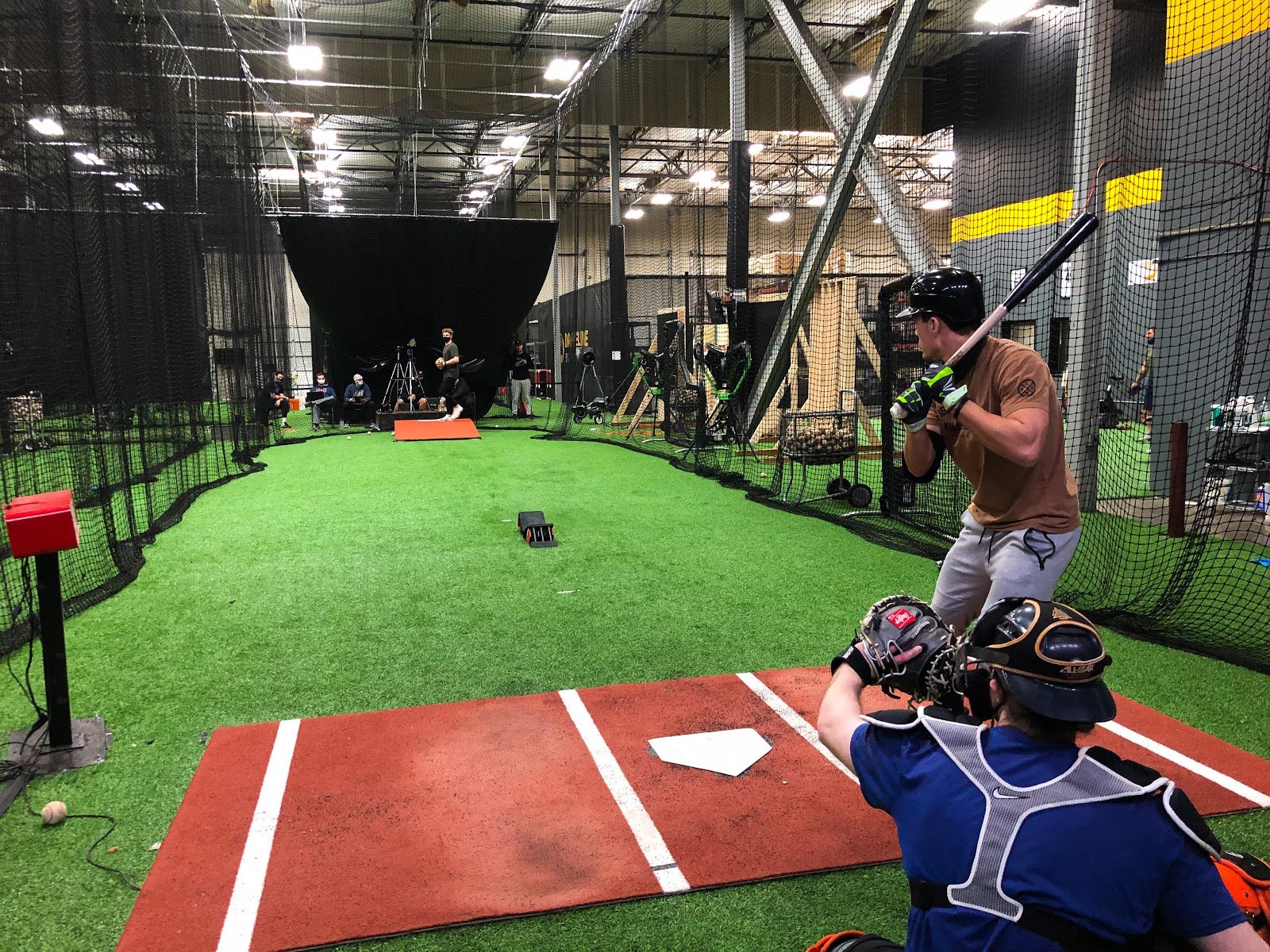Introduction to Hitting Biomechanics

At Driveline, one of our fundamental missions is to “solve hitting.” Tall task, right? While we understand that hitting is far too dynamic and complex to ever be completely solved, working with this goal in mind allows us to operate on the edge of innovation — where the rubber meets the road. If we’re going to talk about the cutting edge of hitting development, our motion capture lab needs to be the place we start. The importance of biomechanics is best summarized by this quote from the Altis Foundations Course:
“Studying biomechanics is ultimately undertaken in order to help us grasp or better understand the physical laws of motion which underlie all movement. The coach’s job is to provide meaningful instruction based on appropriate evaluation of physical movement skills compared to our understanding of the correct technical model.”
Come along for the ride as we show you the reasons why hitting biomechanics is a topic about which we can all get excited.

Become the Hitter You Want To Be
Train at Driveline
What is it?
Described as simply as possible, the motion capture lab lets us turn this…
Into this…
But we aren’t just making skeletons of everyone’s swing and calling it a day. The motion capture lab also allows us to view the kinematics (mechanics) and kinetics (forces) of your swing.
Every angle is captured with sub-millimeter accuracy while force plates collect data on how you interact with the ground during your swing. For example, here is an athlete’s swing synced to his kinematic sequence: pelvis, torso, upper arm, and hands.
And here is another player’s hip-to-shoulder separation:
As you can see, the level of detail is pretty granular, but now it’s time to ask the all-important question: How can we use this information to actually make you a better hitter?
How do we use it?
Quick example: here’s the swing of one of our athletes:
After watching him hit during his assessment, one of the things I noticed was a move he makes during the stride phase of his swing. This is the move I’m talking about:
What I see here is the pelvis and torso starting to get more upright (perpendicular to the ground) before he begins his rotational sequence. For reference, this is what the pelvis and torso would look like at 0° of forward bend:
Below is the same swing, but on the right you’ll see two graphs. The upper is measuring pelvis forward bend, and the lower is measuring torso forward bend. I recommend watching this GIF at least three times.
First, watch the skeleton’s pelvis and torso. Second time, watch only the pelvis graph, and notice how as he strides the pelvis loses ≈10° of bend in a short period of time.
Lastly, watch the torso graph, and notice how it loses ≈10° of bend over a slightly longer period of time. If you watch it a fourth time, you’ll have a great opportunity to view the relationship between the skeleton’s segments and the accompanying graphs.
This is what his posture looks like before he starts to stand upright. Notice that on the right, neither of the graphs show any loss of bend yet.
This is what it looks like after the pelvis and torso have both made their moves to become more upright:
A side-by-side view helps to visualize the differences between these two positions. The two things of note are:
- The pelvis and torso have become more upright (closer to perpendicular in relation to the ground);
- The athlete has come up and out of his hinge position. In other words, the angle between his upper and lower half is more obtuse (greater than 90°).
Is this move a “swing flaw?” Not necessarily.
Personally, I think some hitting coaches are way too quick to label certain movements as “swing flaws,” but that’s probably a blog post for the future. However, a better question to ask would be:
“How does this movement affect what happens downstream in this athlete’s swing?”
In this case, my observation is that the aforementioned move could be causing him to have a more down and around bat path with a lower attack angle. Again, those are my observations. What do you see?
When we looked at his assessment data, two things stood out:
- He had trouble consistently squaring the ball up. His bat speed should yield higher exit velocities, but it doesn’t, meaning that he is cutting baseballs and losing out on potential exit velocity because of a low smash factor on most of his swings.
- Low average attack angle. This is most likely a bi-product of his down and around bat path.
The good news is that we have drills specifically designed to fix these issues! The power of coaching with biomechanics is the objectivity it provides us when evaluating and assessing movement. Then, from a practical standpoint, we can use this information to create targeted and specific training programs, reassess the athlete, and evaluate progress.

Foundations of Hitting
30 modules teaching you everything we know about hitting and hitting mechanics.
Closing Thoughts
Introducing hitting motion capture into the assessment process was a monumental step forward in our journey to solve hitting. As we continue to learn more, we’ll make sure that you learn with us! Be on the lookout for new blogs, videos, and social media posts in the near future.
Get In Touch
Ready to get to work? In-gym and remote options are both available.
- Athlete Questionnaire: Fill out with this link
- Email: [email protected]
- Phone: 425-523-4030
Written by John Soteropulos – Hitting Trainer
Comment section